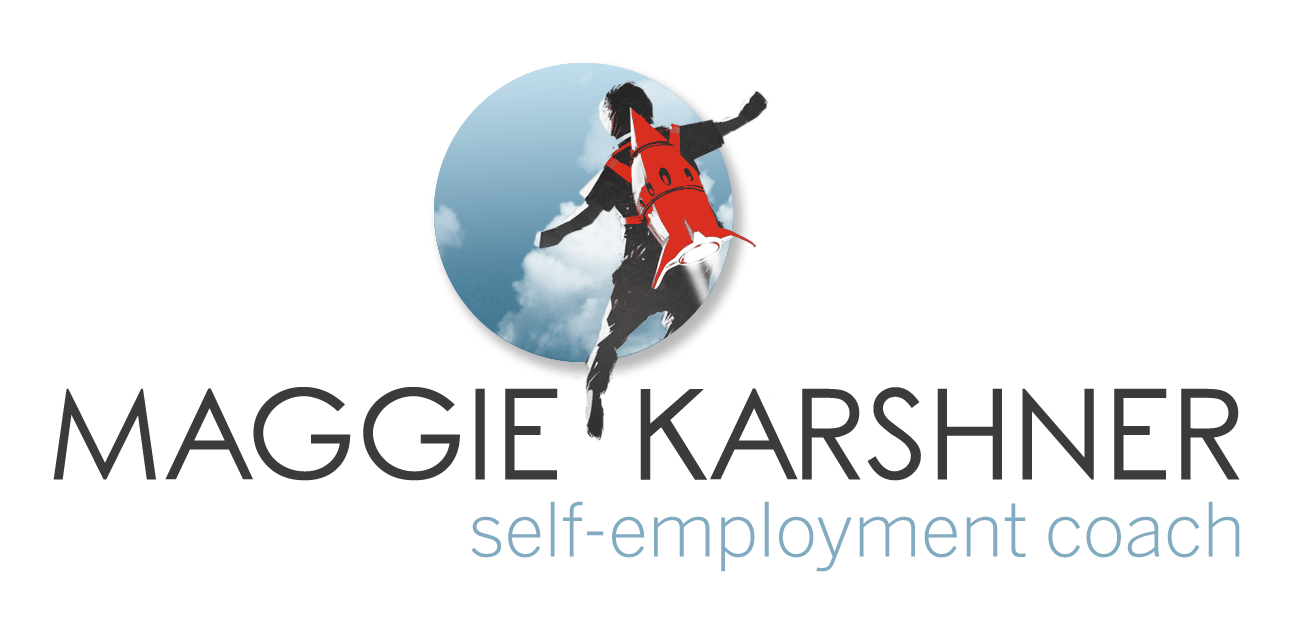Seize Your Process! 3 Steps to Improve Your Conversion Rate
/Why don't your leads become customers? Why don't leads reach out to you? One key and easily overcomeable barrier is your process. More specifically, your lead needs to know what to expect from your process. I notice my clients tend not to think about their process. It seems obvious to the business owner that this is how things would be done. So the business owner doesn't communicate their process and this causes a barrier for potential customers.
The process in your industry is not universal. Each company is going to do things slightly differently. Some clients might be aware of others' processes, but they might also have zero frame of reference for how the work you do happens. If you tell them what to expect, and then do exactly that, it builds trust and can lead to a sale.
If you don’t tell them what to expect, some clients aren't going to reach out at all. Fear of the unknown is pretty common in human life, but that doesn't make it insignificant. When it comes to making a purchasing decision, any trepidation might stop the purchase dead in its tracks. As business owners, there are plenty of unknowns we can't control for. But if the customer has an unknown that you DO know, don't lose the sale because you didn't let them know!
What is Your Process?
You don't need to invent a process. You need to take the logical steps that you'd take instinctively and spell them out to your customer. To help facilitate this, we can think of every process as having three major components:
Inputs
Discovery
Propose, Close, Deliver
I'm going to explain each of these and provide an example. Since it's fresh in my mind, I'm going to use the eight HVAC companies I recently reached out to as a case study. I asked them all the same thing: give me a quote to replace my (very old) furnace and add AC. Their processes varied so widely that this is a great example. Let's look at how this process worked in action across multiple companies within the same industry.
1. Inputs
The inputs of the process are how the client goes from being aware of you to you being aware of them. Since humans aren't psychic this generally means making a call or sending an email. It could also include scheduling a complimentary session or meeting. Occasionally it comes up in an in-person conversation.
With my furnace project, all offered free quotes and I took the step indicated on their website to request a quote. Sometimes this was making a call, sending an email, or submitting a web form. A couple had an online scheduling feature, but most had me speak with a person to schedule a time for the quote.
In two instances the Input component had fatal flaws. One of these I couldn't get scheduled at all. The other wasn't clear on what time they were coming, so I missed them, and instead of rescheduling, they had me send a photo and texted me a quote. This utterly skipped the Discovery component. More on that later.
2. Discovery
In order to ensure you deliver what the customer wants, it's helpful to take some time to make sure you're clear on what they want. And in order to get that information out of them, they need to know that you need it and how to give it. They also want to learn if they feel you are the best choice for them.
This step typically involves having a real-time conversation with the client. Take this opportunity to ensure you can do what they want, that you're setting reasonable expectations, and you're proposing a price applicable to their needs. It's not impossible to sell without this, but it is a lot easier than, for example, an entirely digital process.
The six companies that made it to my house needed to meet with me and be able to access the furnace. These visits took anywhere from 30min to 90min. Some warned of this at the time of scheduling, while others didn't. Beyond this, no one told me what would happen during this visit. So when I greeted them at the door, I asked something to the effect of "what do you need to do here?" From there they were either assessing the physical needs for the equipment or the psychological needs of me as a consumer.
The Physical Needs
The technical needs that you need to collect in order to do your work are your responsibility, not your clients. It's your responsibility as the expert to collect the information you need to ensure the customer will be satisfied. Being able to communicate with the client in advance makes the process more smooth.
Even just assessing the physical needs of my HVAC system varied wildly. Four of them wanted to see the furnace first, one wanted to sit down and chat first, and one wanted to see the upstairs first. One was so chatty I worry we would have never gotten to the furnace without my abrupt interjection. While they all eventually did look at the furnace, one never did bother seeing the upstairs nor taking a count of the registers.
The one who made a quote off a single photograph asked nothing about my needs, the house's square footage, nor the number of registers. This lack of investigation of my property’s physical needs leaves me, as the customer, doubtful that the quote is accurate.
The Psychological Needs
Beyond proposing equipment appropriate to my house, they also needed to build trust and propose equipment that was in alignment with my needs and values. People buy from people, even when it's buying a furnace. People also prioritize quality, price, and timing differently. You need to instill trust and get an understanding of your customer's priorities so you can land the sale, and ensure a happy customer.
Trust building isn't particularly difficult for honest people. Avoid undermining your attempts to build trust by bad-mouthing your competition, like one salesperson did recently. That kind of high-status power-play may have worked in the past but these days it only erodes trust. Do be clear and sincere with your intentions, like the salesperson who clearly stated that he wanted to "earn my business."
The responsibility for clarity on quality, price, and timing alignment leans more towards the consumer; it was more up to me to be clear on where my priorities lie. But the salesperson can lend a hand by taking the necessary time to share key facts in each of these areas. E.g. Does the work come with a guarantee? What all goes into the price? When could the work get done? Following the verbal conversation with the same information in writing is a stand-out strategy, but don't overlook the trust-building that can occur by discussing these with your customer.
The person who sent a quote over text message had done nothing to build trust. They had no idea what my priorities were. The key to building trust is to take the time to talk with them and just be a reasonable and ethical person. They skipped this step and it will cost them this sale. Don't cut your process so short! You’re not “wasting” your client’s time if you’re building rapport or learning things about them that will help you serve them better!
This example demonstrates not only a wide variety of steps but also a great variety in how and how much they discovered about me, my needs, and my goals. Ensure your process has reasonable space for discovery and trust-building between you and your client.
3. Propose, Close, Deliver
At some point, you've got to tell the person what solution you have for them and how much it costs. This is sometimes called a sales meeting. In our consumerist culture, customers generally know this part is coming, so there’s not a huge need to tell them about it. Though it can be helpful to point out the line between complimentary services and compensated services.
Proposals go awry when: (1) you and your client disagree with what they need, (2) the price is not what they expected, or (3) they don't trust your assessment or price. In the first case, something went wrong in the discovery stage. In the second case, either they simply can't afford it or something went wrong in the discovery stage. In many instances these situations are unsalvageable. If they were an ideal client, make note and improve for next time. If they weren’t an ideal client, then you doged a bullet and be thankful!
That third case is where there's the biggest variety and the most room for interpretation. How you propose goes into the customer's perception of trust. Looking at the proposal, the customer determines if they've been heard. Taking time to review the proposal with them ensures that you convey your rationale to them. Reviewing all the features and components makes sure the customer has heard what they need to about quality, price, and timing. This ensures that the customer is confident to move forward, or if they’re exploring your competitors, that they’re comparing apples to apples.
The key thing with proposing, as with all of your process, is that you’ve thought this through in advance. As an added bonus, plan for how to present the information your client needs in the most digestible format for them. You could, like some furnace salespeople, leave without reviewing a proposal and instead send it later for the client to review on their own. Or you could, in the same visit, walk the client through your proposal on an iPad. This would mean that you need a way to form a proposal nearly in real-time, or set the expectation that you’ll need 10-20min in your truck to run some calculations.
After presenting the proposal, the ball is now in the client's court. They have to make a decision and then take action. Be clear about what that action should be. It’s also worthwhile and can be helpful to follow up with them. You can volunteer to clarify any new questions they have, and this helps to ensure the customer doesn't stall out on this step.
Don’t forget that things happen once they’ve approved the proposal: money changes hands, contracts are signed, and work commences. But which of those have to happen for your business? And in what order do they happen? Be clear with your client. Again, there’s no wrong answer here, as long as you’re clear ahead of time.
The Right Process
I preferred some of these processes more than others. Most idiosyncrasies of a company’s process were surmountable. It was only when one got too far out there that it was going to be more difficult to land the client. At the end of the day, what matters is what your client prefers because each nuance in a process appeals differently to different people. Think through your process and what will work best for you and your ideal client, then communicate how you work.
You don’t have to copy what others do in your industry, especially if you’re clear about what you do and why it’s better. Document your Inputs, Discovery, and Propose components of your process. Ensure there’s no breakdown or key thing missing from those components. Then disclose a summary of that process to your client. Let them know what to expect and meet those expectations. Meeting expectations is a super easy way to build trust that costs you nothing!
Need help figuring out your process? I developed this worksheet to help you out!




